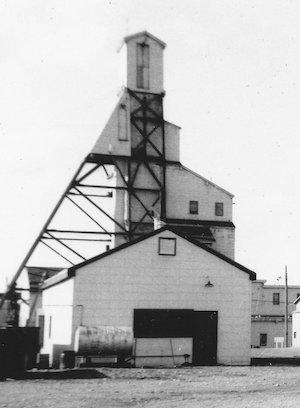In this issue: Annual General Meeting - Strategic Plan - Goodbye to the Giant Mine Headframe - New Cat Train Display
Annual General Meeting
Welcome aboard new board members and thanks for the great turnout from our 2015 Annual General Meeting, held on September 16 at the Northern Frontier Visitors Centre. President Walt Humphries welcomed the membership to its 13th annual meeting and provided updates on the Society's progress in the past year. Interior renovation work continues on the recreation hall building this summer and plans are underway for filling in the parking lot with rock fill and gravel. This will not only allow for future parking at the museum facility, but open up a new area to develop outdoor displays. A survey has been completed for our lease area.
The audited financial statements were read and approved by the membership. A big source of revenue this year was the Beer Barge event with over $20,000 in profit. Government grants in the amount of $150,000 were received which have been applied towards site construction. We also welcome new board member Adam Vivian to the society!
Strategic Plan
A strategic planning session held earlier in the new year was released at the AGM. In order to move forward, the Society wanted a strategic plan. Ayni Conceptions was hired to support the Society through its strategic planning process. What followed was the result of numerous hours of discussions. The NWT Mining Heritage Society is poised to make their vision of opening an interpretive center in Yellowknife a reality.

Goodbye to Giant Mine Headframe
Our dialogue with the Giant Mine Remediation Project team has improved this summer and we hold regular meetings with the government on issues as it concerns our activities at the Giant townsite area. We are saddened to learn that the A-shaft headframe is in poor shape and will have to be torn down in the near future. We have expressed our interest in keeping the large powerhouse building - with its antique diesel engines and sturdy architecture - and elements of the old hoist room. It has been a bad summer for losing mining heritage. There is no clear solution for saving the Con Mine Robertson's shaft headframe, and the Giant Mine C-shaft headframe will be coming down this winter. The C-shaft headframe was completed in 1950 and upgraded with a steel frame in 1989. It is an iconic structure on the Yellowknife landscape and will be missed. Crews have already began taking apart the old wood structure.
New Cat Train Display
Work has been ongoing this summer to clean up and add to our Outdoor Display at the Giant Mine boat launch parking lot. We have positioned a number of new items including an old grader, stamp mill, air compressor, table saw, Athey wagon, assay furnace, and sawmill. Work will continue on installing information placards to provide interpretation to visitors on these relics. We also hope that the fence that cuts through our old rail display will also be taken down this coming winter.
Our most exciting new display is a part of a Cat Train convoy - a caboose and sleigh runners. In the 1930s, long before engineered ice roads, bulldozer-drawn sleigh convoys known as Cat Trains were the primary method of freighting supplies during the winter months in northern Canada. The first Cat Train in the Yellowknife area was under the employ of Mining Corporation of Canada who departed the settlement in the winter of 1937/1938 for its gold project on Gordon Lake. It was such a success that freight operators began regular service from Grimshaw, Alberta to the Northwest Territories in 1939 to supply Yellowknife and the gold mines with important freight and supplies. It was a revolutionary transportation link, but with the development of ice road trucking and modern highways in the 1950s, the Cat Trains became obsolete.
The Cat Train consists of a bulldozer linked together with a series of freight sleighs, and a caboose at the end of the train as living quarters for the crew. This display was made possible with the generous support of Cliff Heal, Ryan Silke, Gilbert Hillier, Mark Rocher, Rick Muyres, and Blair Weatherby. The caboose was used by Smokey Heal and Del Curry of Curry Construction in the 1950s as part of the freight haul between Hay River and Yellowknife. It was donated by Cliff Heal and restored by Ryan Silke with the help of Gilbert Hillier in 2012-2013.
The men who pioneered this method of transport were hardy, good natured and hard drinkers, accepting the cold and other hazards as everyday occurrences.
See CBC's coverage of the history of Cat Train technology on their website.